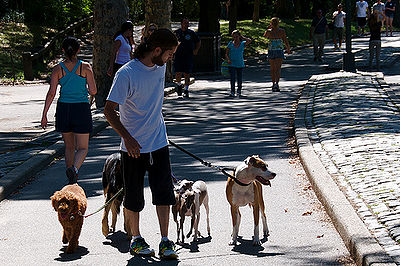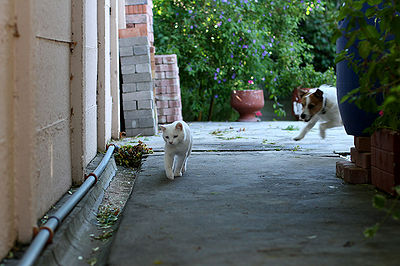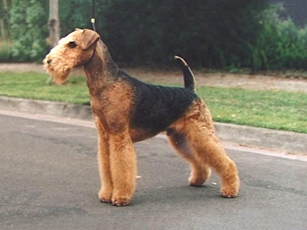
A dog is a wonderful, amazing addition to any household. And they are so great, you may want more than one. But before you make that addition, let’s examine the pros and cons of being owned by multiple dogs.
Pros: If one dog is so much fun, another can only double the fun (and work). Two or more dogs can form companionships, especially if left alone for long periods of time. Being part of a pack gives you a better understanding of canine behavior. Adding another dog to the household can pep up a senior dog or be an aid if your other dog is timid or fearful. Finally, having another dog can ease the pain of losing one of your beloved furpals.
Cons: If you rent, does your lease allow more than one dog? Do you have enough room for another dog? Think about the financial side of ownership – another dog means costs go up such as food, veterinary care, boarding if necessary, pet insurance, incidental items. If you take your dogs traveling, will hotels allow more than one dog. And very importantly, will your present dog accept a new pal? Will your neighbors tolerate what could be an increase in noise levels (barking)?
Now that you’ve decided to bring another dog home, here are some tips to help with the addition.
It’s vital for your dogs safety and yours that they are properly introduced on neutral territory. Spaying or neutering your dogs will help decrease any aggressiveness that may be present.
If you leave food out all the time for your first dog, that should change. It’s not good for any dog and can lead to obesity and other health problems. Feed the dogs at regular times, half the amount in the morning and the other half in the evening is best. Measure food according to the size of each dog. Have specific, separate areas for feeding to avoid problems.
Many dogs like to have their own beds to cuddle in. It’s a matter of observing your dogs to see what they prefer. If they want their own space, keep the beds apart unless the dogs themselves decide to bed together.
You may be lucky enough to have one dog that loves to play with toys while the other has no interest at all. Of course, this can change when one sees the other with a toy. It’s very important to supervise play for the first few weeks. Give them each their own special place where they can play without being disturbed. At this point, a crate can come in handy.
Obedience training is a must, especially in a multiple dog household. Corrections with a firm “No” need to be made immediately when necessary. Same with praise. Never, ever strike a dog – you want to teach discipline, not fear.
A well-exercised dog is usually too tired to get into mischief or squabbles with dogmates. Walk or jog with your dogs daily. Check about training for competitions such as agility trials. Mental stimulation helps as well – check out all the new puzzle toys or make up your own games.
You and your dogs need to learn to walk together. You may want to start with training them individually. They should be leash trained. Some dogs may be stubborn at the beginning – sometimes they learn from watching the other(s). When you begin to take them out together, stay on a road with little or no traffic. The dogs should be on the inside nearest the walk. They won’t all walk exactly together, so adjust the leashes for their comfort and yours. If you have to untangle leashes, don’t let go of any of them. Stop and work calmly, giving them the sit or down commands. If any of the dogs pull while walking, there are harnesses available to aid in preventing pulling. Be attentive to your dogs. One may want to stop and smell the roses or relieve himself. If you have 2 dogs who are pals, there is a leash available with 2 attachments for the dogs.
What if, in spite of these efforts, your dogs are still not getting along well. There is something you can do to help them become friends. You’ll need a friend of yours to help you with this.
- Start with keeping one dog out of sight at first.
- Staying at a safe distance from each other, leash both dogs, having your friend hold one and you, the other.
- Both of you should have lots of the dogs’ favorite treats – little pieces of chicken, cheese or whatever your dogs really like.
- When the second dog appears, give both dogs lots of treats. They will associate their good fortune with the sight of each other.
- Remove one dog and repeat the exercise.
- Keep repeating the steps, increasing the time they can see each other and gradually shortening the distance between them.
- When they both respond consistently, add commands such as sit, down, stay, roll over and so on.
- Change the environment. Have your partner take one dog walking while you take the other. Keep yourselves between them at first. When you feel they are ready, you can walk naturally. You can do this same exercise with swimming or another activity.
If you continue to have any difficulty with the dogs’ behavior, you should consult with a professional dog behaviorist.
Be patient and take time training your dogs. You and the dogs will eventually get the hang of it.
Your decor may suffer a bit and your house may not be clean enough to eat off the floors (that won’t bother your dogs), but it will be filled with joy and love (most of the time).
Related articles:



